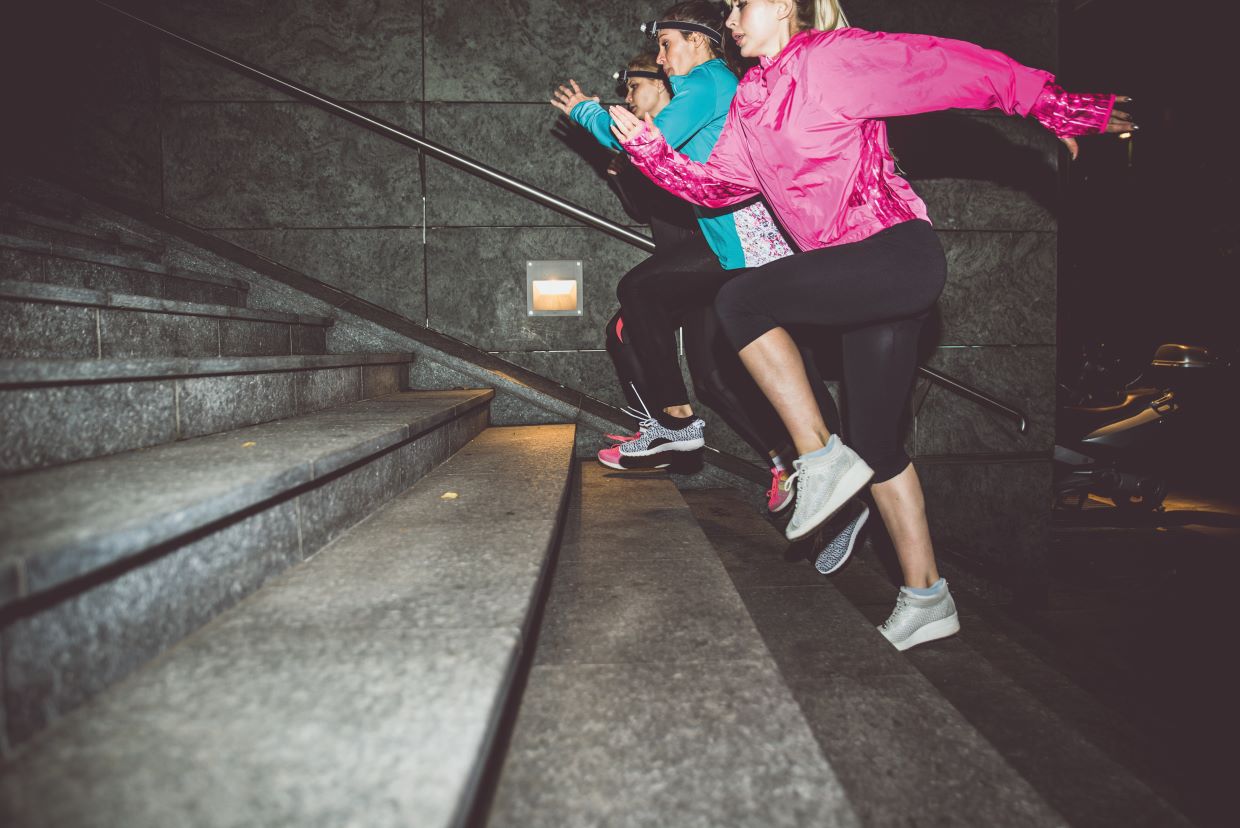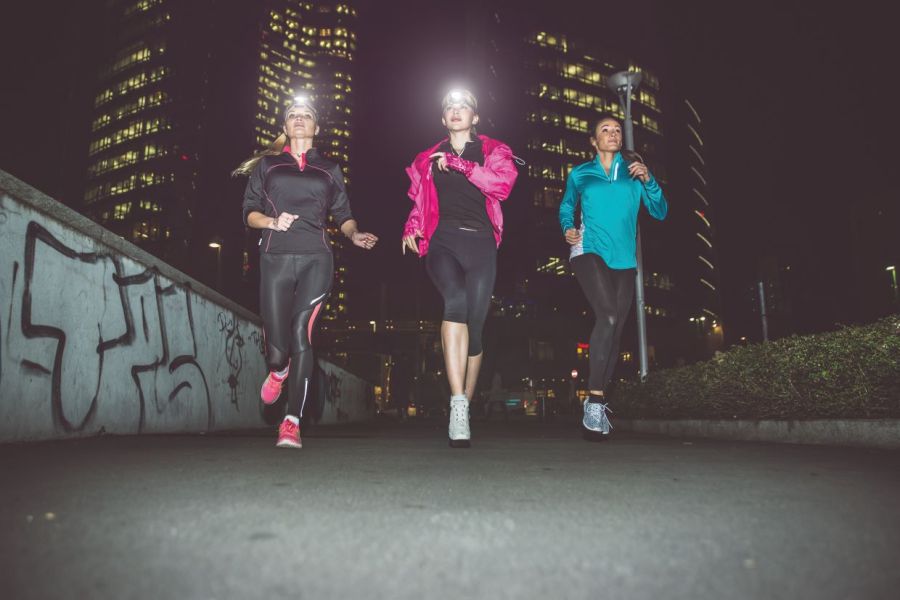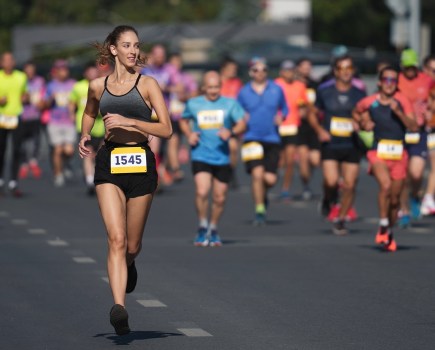Being seen, exercising with others and planning your workouts wisely could help you to stay safe and warm while exercising outdoors this winter. Here are some top safety tips for running in the dark this winter…
There are so many things working against your workout mojo right now – the mornings are cold, the nights are dark, the daytimes are wet and your energy levels are low. It doesn’t help, then, that personal safety while exercising outside has come to the fore as something we must be aware of.
Related: Stay seen – 15 reflective activewear garments for women
‘The recent news coverage of attacks against women has sparked the conversation again about women, outdoor exercise and safety,’ says Claire Goodliff, co-founder at Amazing Jane, which recently launched a pair of leggings with a concealed pocket for a tracking device.
‘We all deserve to feel safe when being active outside.’
‘The changing seasons really do bring a heightened level of vulnerability to women – something we can’t ignore,’ says her co-founder, Debra De Luen. ‘It pains me that we have to think twice about not only a run route, which is a current talking point, but also the times to go out on the bike, walk the dog or even walk back from a fitness class in the autumn/winter months.’
In fact, these points may go some way to explaining why data from the Office for National Statistics (ONS) found ‘one-in-two women felt unsafe walking alone after dark in a quiet street near their home’.
We all deserve to feel safe when being active outside. And it’s also a matter of physical safety – avoiding getting too cold, not risking a fall in damp conditions, being seen by those in vehicles. Fortunately, these tips can help when it comes to safely – and enjoyably– exercising in winter.
How to stay safe running in the dark this winter
Light up
While it might not be the height of fashion, brightly coloured, fluorescent kit will ensure you’re seen on dreary days. After dark, wearing head-to-toe fluoro yellow isn’t enough. You also need to ensure you’re wearing reflective kit that allows light from vehicles to bounce off the material and glow brightly. And use a head torch or, if you’re a cyclist, fit good-quality front and rear lights to help you see where you’re going.
SAFETY KIT: High-vis vest, light-coloured or reflective layers, head torch, bike lights, clip-on LED lights, ankle/wrist bands.
Be heard – and listen out
You don’t get any points for realising that you shouldn’t wear headphones at night. Being able to hear approaching vehicles and people is a must. Instead of taking your earbuds, carry a whistle with you on your run or to an outdoor session. This will come in handy if you get attacked or injured.
Download a safety app, as these tend to have a live GPS for emergency contacts and/or a panic button. Cyclists, make sure you have a loud bell on your bike to let other road users know you’re coming.
SAFETY KIT: A bike bell, whistle, safety apps, personal alarm. ALWAYS leave your headphones at home when it’s dark!

Run in a group
One of the best safety precautions is to head outside in numbers. Run with a buddy, join a club, cycle to work with a colleague or train outside with a bootcamp. If you’re heading into the great outdoors alone, pick a well-lit route you know well and that’s in a place where there are plenty of people. Avoid using the same route every day and always let someone know where you’re going before heading out.
SAFETY KIT: A mobile phone, some emergency cash, personal ID, tracking devices or apps.
Slow down
Dark nights and murky mornings are not the time to do speedwork. Not only will the darkness obscure potential hazards, such as wet roads, snow or ice, but intense exercise will also use up a lot of your energy. This means you’ll be too tired to defend yourself if need be.
This doesn’t mean you must skip max-effort workouts in the winter. Instead, consider joining a sports club where you can train with friends in suitable locations, such as on a flood-lit track or in a sports hall, or do your speed sessions in the gym.
SAFETY KIT: Grippy trainers, pedals and tyres, to minimise the chance of tripping and slipping on wet, muddy and uneven ground.
Words: Sarah Sellens







